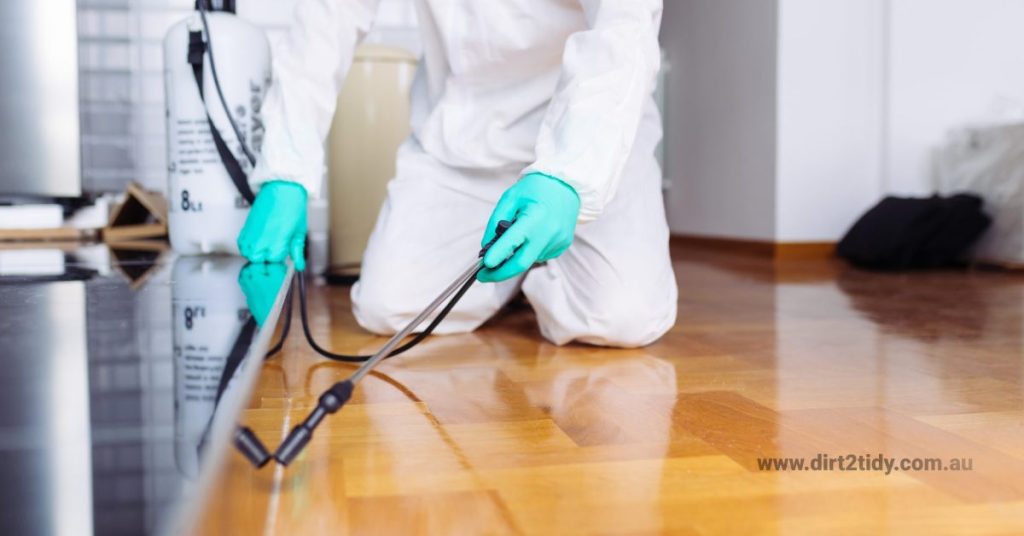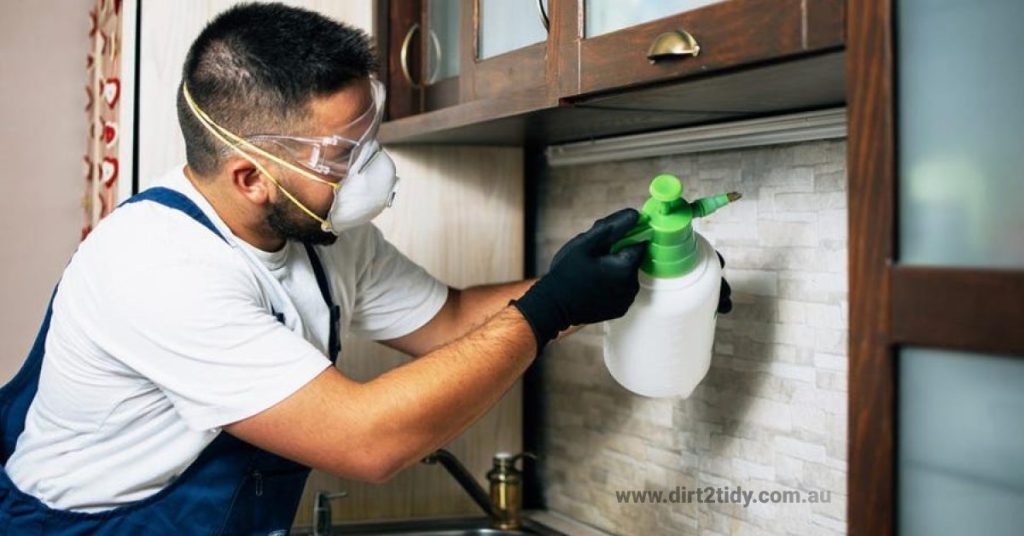Table of Contents
Pests are making some homeowners concerned. Vermin may not come close to you or your family, yet they can still destroy your property and health.
Ants, termites, rats, fleas, cockroaches, bed bugs, squirrels, mosquitoes, spiders, pigeons, wasps, and more are common household pests. Most of them carry diseases that can create health problems for your family and pets.
Most individuals use pest control technicians when termites infest. Everyone uses pest control, whether they do it themselves or hire a professional for the pest problem. Professional exterminators have received extensive training, know what treatments to use, and can readily spot pests. Pest treatment ensures a pest-free house.
You want to know if you have to leave your home for pest control, though. Several homeowners like to stay for pest control treatments so they can see how they are administered. Others want to stay outside because of the pollution.

So, for Pest Control, Should You Go or Stay?
People enquire if they may stay in the house during pest treatment. Nope. Non-toxic pest control methods don’t require you to leave the house. If your exterminator uses human and pet-friendly treatments, he or she may urge you to stay.
Condition depends on the pest kind and the exterminator’s toxic chemicals. Some substances can be harmful. Leaving the house is also excellent for your family and pets.
Some companies still use products with chemicals that pose health risks. These particular products might require you to evacuate your home for upwards of 24 hours. It’s crucial to understand the potential dangers associated with these chemicals.
- Health Risks: Certain chemicals can be harmful to both humans and animals.
- Evacuation Time: A 24-hour evacuation period might be necessary to ensure safety.
Choosing the right pest control method ensures your well-being, so always inquire about the products being used.
If you want to keep your family and pets safe, leave before pest treatment begins. This prevents your family from becoming ill. Even if a pest control specialist does the job, you may still be exposed to dangerous chemicals.
In most cases, you’ll need to vacate your home for about four hours. This is crucial for children, the elderly, and those with compromised immune systems to ensure their safety while the chemicals dry and take effect. Even with the use of safe chemicals, there’s still a risk of dermal, ocular, and respiratory exposure.
By planning ahead and temporarily relocating your family and pets, you can ensure that everyone remains safe and healthy during the pest control process.
Related article : Is it safe to be in a house after pest control?
If you have children at home, it’s unsafe to let them remain since they can sneak into the treated area and play while you’re watching. Chemicals can harm their respiratory system and skin.
You can remain or go. Stay to see where treatments are administered and left. If you want to keep everyone safe, hire pest control.
Pre-pest-treatment tasks
When you engage a termite exterminator, you need to prepare your home so he can do his work. Before the exterminator arrives, do these things.
Accessibility
Before an exterminator comes, make your house accessible by removing obstacles. You must move furniture, appliances, and more before the professional arrives. Accessible homes facilitate pest inspections and treatments.

Wrap Up
Cover your stuff before the exterminator comes. This is to prevent chemical absorption. Chemicals may harm or destroy your belongings.
Cover and store your clothes, jewels, pet and children’s toys, toiletries, bed sheets, and pillowcases during treatment. Your cabinets are ideal storage spaces. However, use masking tape to absorb chemicals.
Properly store food
Food shouldn’t absorb pesticides, right? Properly store food to avoid it. Your food will be safe in the fridge, airtight containers, glass jars, and more.
The meals or fruits you constantly put on the table should be kept first, because if you don’t, they’ll contain chemicals that leave a residue and you’ll have to toss them away.
Pets Welcome
Bring out pets to keep them safe and healthy. Chemicals can be harmful to pets, so don’t expose them. If you have pets, keep them outside or leave them with a relative for a few hours.
Cover your tank to protect your fish from chemicals. After the exterminator treats your house, you must also take precautions with dead pests and entry points. Sometimes, pest control products do their work behind the scenes, and you may find dead bugs or rodents in unexpected places over the next several days. Be sure to promptly clean up and properly dispose of any dead pests, especially if you have young children or pets who might come into contact with them. This helps prevent accidental exposure to both the pests and any lingering chemicals.
Pay special attention to areas where pests typically enter your home—windowsills, doorways, and baseboards. Sealing these entry points after treatment can help keep new invaders out and make the results of your pest control last longer. Regularly check these spots and tidy up as needed, but remember not to wipe away the treated surfaces too soon, or you risk reducing the effectiveness of the chemicals.
Taking these steps will help keep your family and pets safe, and ensure that your pest control investment pays off.
Don’t rush in
If the exterminator asks you to leave before treatment, ask when to return and arrive 15 minutes earlier. Sometimes you must wait three to four hours before entering a treated home since the chemicals are dry.

Clean after a week
Even if you want to clean after pest control, you shouldn’t. If you clean, the chemicals won’t take effect. You can’t eradicate bugs from your house. Keep the treatment intact by not wiping baseboards, worktops, floors, etc. After a week, cleaning chemicals have worked.
Pest-Checking Shouldn’t Stop
Even after treating your property, pests may still be there because the process takes time. Always inspect for bugs to see whether your remedies have worked. You’ll know whether they’re active after being sprayed. By examining the following treatment, you’ll know whether sections are infected or problematic.
Before and after insect treatments, remember these things. Keeping these in mind will help the exterminator design successful treatments. You can leave the house for pest control, but it’s ideal to be out to avoid health issues.
How Temperature Influences Drying Time of Pest Control Chemicals
Temperature conditions inside your home can significantly impact how quickly pest control chemicals dry. Generally, warmer conditions in the summer months speed up the drying process. This is because higher temperatures enable faster evaporation, allowing chemicals to settle more swiftly.
Conversely, cooler temperatures in the winter slow down drying considerably. The reduced evaporation rate means chemicals take more time to dry, potentially prolonging their effectiveness and exposure times.
Key points to consider:
- Summer Conditions: Faster drying due to higher temperatures and increased evaporation rates.
- Winter Conditions: Slower drying as a result of lower temperatures and reduced evaporation.
In essence, maintaining optimal indoor temperatures can help achieve more efficient drying of pest control chemicals, enhancing their performance and safety.
Hire a Pest Control Company
Dirt2Tidy Pest Control is happy to help. The organisation offers pest control services to tackle termites, ants, cockroaches, etc. throughout North Carolina.
Dirt2Tidy Pest Control has the right equipment, treatments, and eradication strategies to eliminate pests. With them, you may have a pest-free, healthy house since they’ll remove pests inside and outside.





